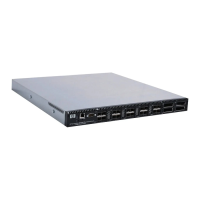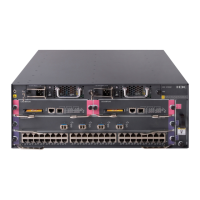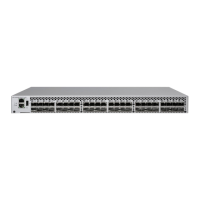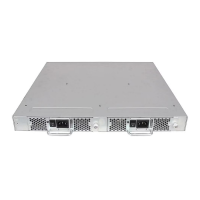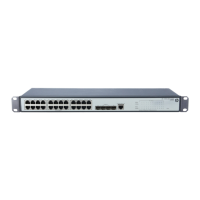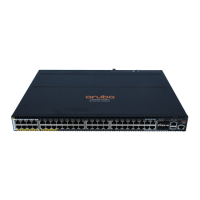HP StorageWorks 8/20q Fibre Channel Switch Installation and Reference Guide 11
Port Activity LED (green)
The Activity LED indicates that data is passing through the port. Each frame that the port transmits or
receives illuminates this LED for 50 milliseconds. This makes it possible to observe the transmission of a
single frame.
Transceivers
The 8/20q Fibre Channel Switch supports SFP+ optical transceivers for the Fibre Channel ports. A
transceiver converts electrical signals to and from optical laser signals to transmit and receive data. Duplex
fiber optic cables plug into the transceivers which then connect to the devices. A port is capable of
transmitting at 8 Gb/s, 4 Gb/s, or 2 Gb/s; however, the transceiver must also be capable of delivering at
this rate.
The SFP+ transceivers are hot-pluggable. This means that you can remove or install a transceiver while the
switch is operating without harming the switch or the transceiver. However, communication with the
connected device will be interrupted. For information about installing and removing SFP+ optical
transceivers, see ”Install the transceivers” (page 36).
Port types
The 8/20q Fibre Channel Switch supports generic ports (G_Port, GL_Port), fabric ports (F_Port, FL_Port),
expansion ports (E_Port), and transparent routing ports (TR_Port). Switches come from the factory with all
Fibre Channel ports configured as GL_Ports. Table 1 describes generic, fabric, expansion, and transparent
routing port functions.
Table 1 Fibre Channel port types
Port type Description
GL_Port Generic loop port—self-configures as an FL_Port when connected to a
loop device, as an F_Port when connected to a single device, or as an
E_Port when connected to another switch. If the device is a single device
on a loop, the GL_Port will attempt to configure first as an F_Port, then if
that fails, as an FL_Port.
G_Port Generic port—self-configures as an F_Port when connected to a single
device, or as an E_Port when connected to another switch.
FL_Port Fabric loop port—supports a loop of up to 126 devices. An FL_Port can
also configure itself during the fabric login process as an F_Port when
connected to a single device (N_Port).
F_Port Fabric port—supports a single device.
E_Port Expansion port—expands the fabric by connecting 8/20q Fibre
Channel Switches. The 8/20q Fibre Channel Switch self-discovers all
inter-switch connections. For more information, see ”Multiple switch
fabrics” (page 20).
TR_Port Transparent routing port—expands the fabric by connecting an 8/20q
Fibre Channel Switch to an HP StorageWorks B-series or C-series remote
fabric. The TR_Port provides transparent communication between local
fabric devices and remote fabric devices while maintaining separate
fabrics. For more information, see ”Transparent routing” (page 21).
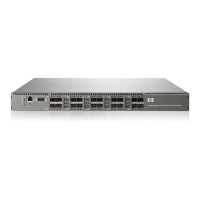
